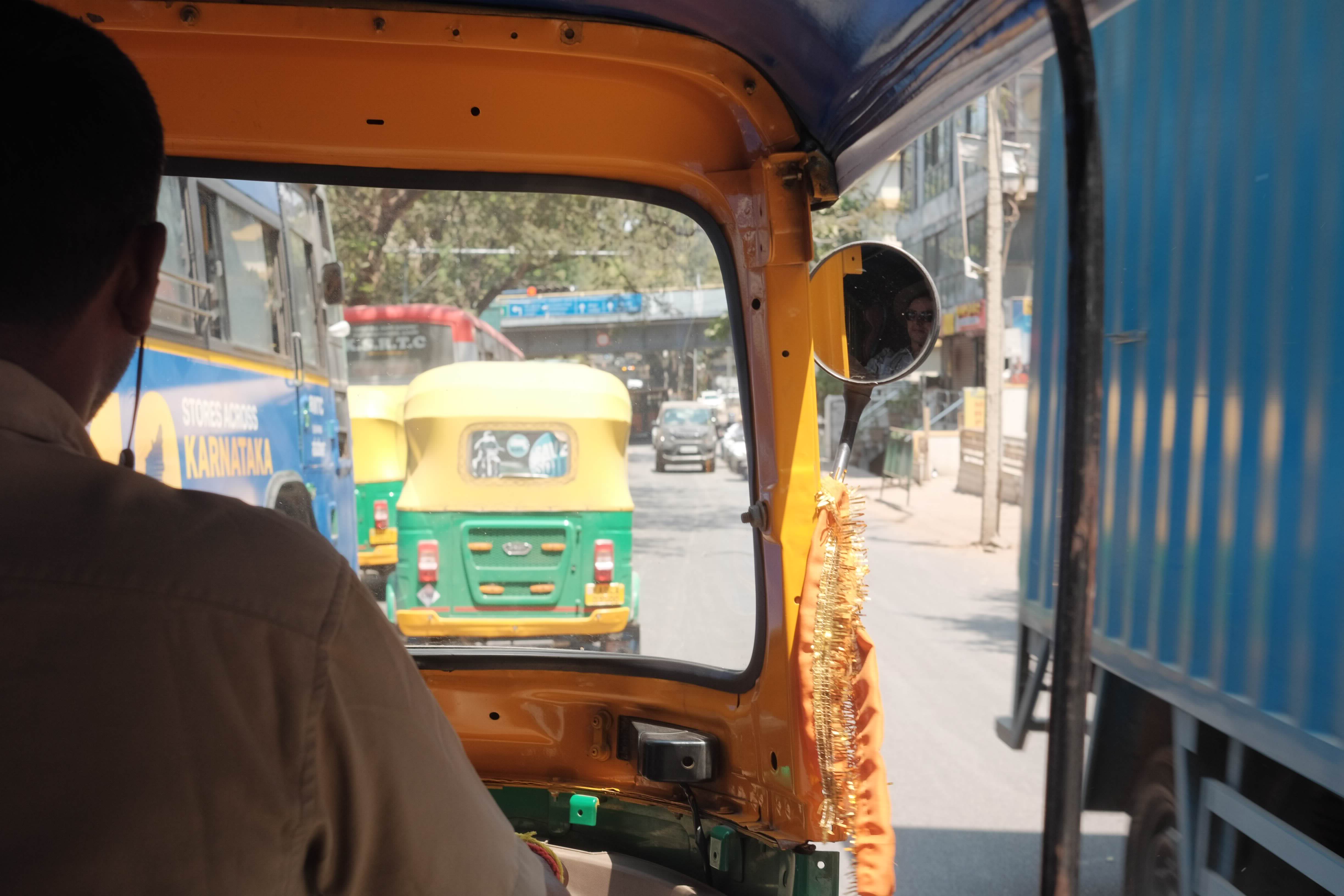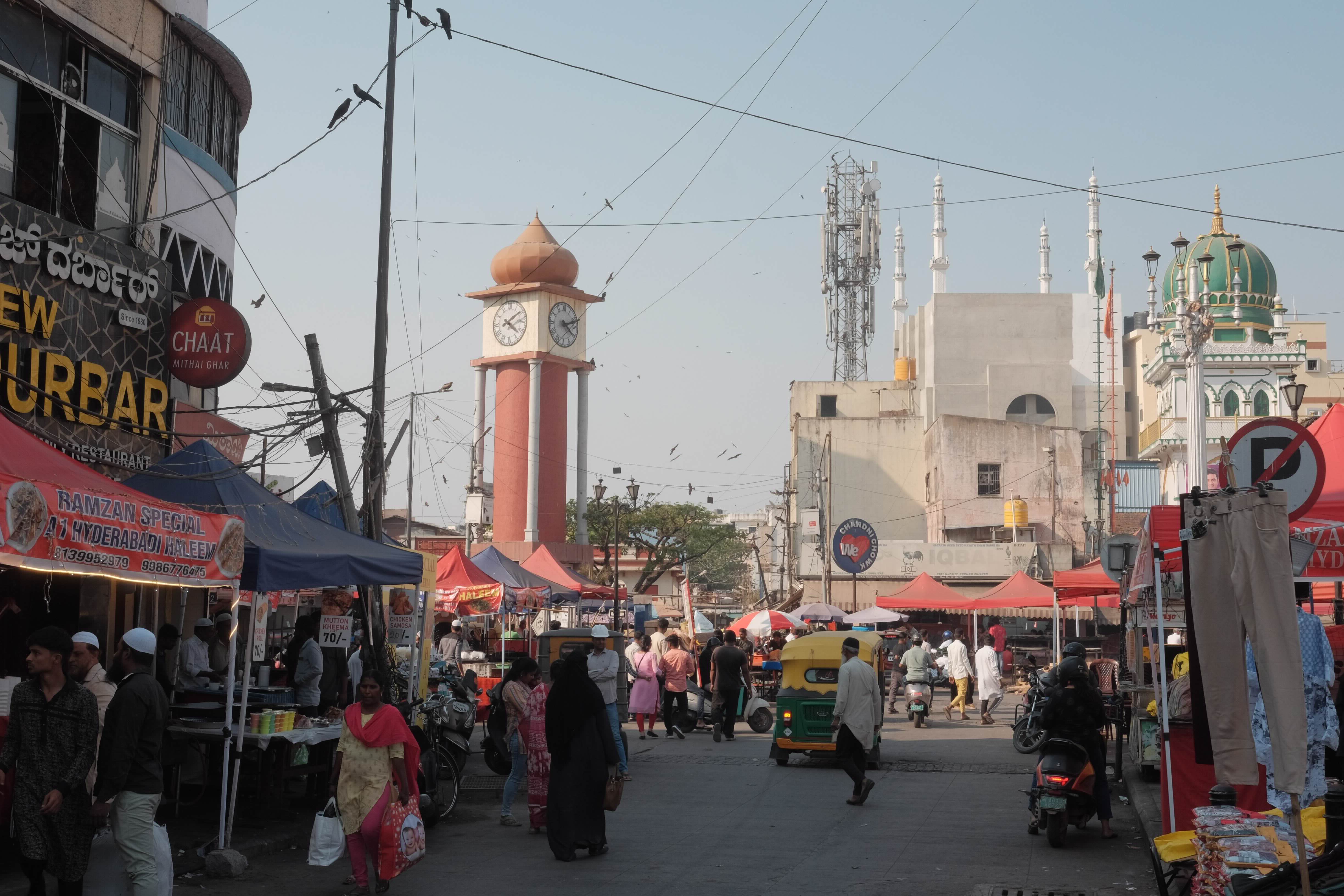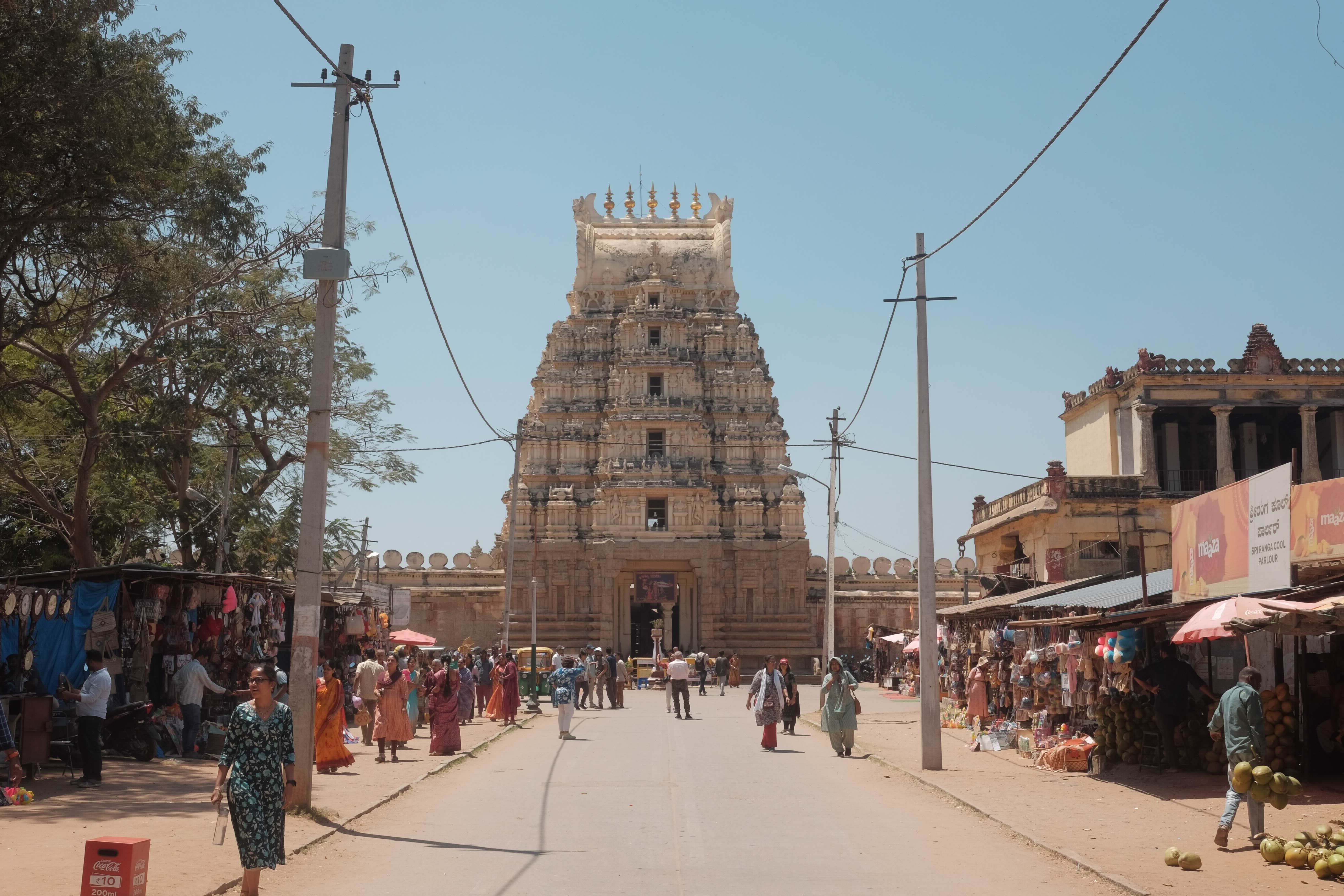Bangalore and Karnataka
posted on 1 April, 2025 by Dan Vonk in personal, travel

Bangalore, which is known as India’s “silicon valley”, was my first port of call for my trip to India. It was the winter semester break and I had just been travelling around Venice and Triest, so my mind was hitherto occupied with the calm and cultured sights of northern Italy. However, this collected state disappeared as soon as my first night in India, when my long-neglected sense of culture shock arose again and brought me back into the present with the overwhelming feeling of newness that all travelers crave.
I had arrived in the early hours of the morning and had therefore booked accommodation in a village close to the airport, a place I affectionately called the Luton of Bangalore. Getting there was easy enough, it was just a matter of booking an Uber using the airport’s Wi-Fi. However, the driver dropped me off on a dirt road underneath the busy motorway underpass, just outside the village. I had to walk about 20 minutes in the darkness, alongside the typical roadside rubbish, all the while the street dogs glared suspiciously at me. Some detours were made to avoid the barking ones as it was too early in the holiday to open that can of worms. Of course, I gave the Uber driver 5 stars–I mean he has to earn a living.
The hotel itself was fine enough, a little scruffy, but that is more or less the norm there unless you go for something properly fancy, in which case, it gets truly fancy. Though even at this modest hotel, the breakfast menu was just great. In weeks previous, I acclimated to indulging on Italian-style filled croissants with a cappuccino but this was far better. In the beginning, the items were all quite mysterious. Various curries, sometimes red and sometimes white. Deep-fried dough and flying saucer shaped objects to go with. Not to forget the masala chai: was that cardamom and cloves I was tasting in there or was it cinnamon and ginger? No, it turns out it’s everything! In the next few weeks, I became a lot more familiar with the items and soon knew my idli from my vada and my coconut chutney from my sambar. Though if there was one common theme, it was that almost every meal was absurdly spicy.

After experiencing Luton, it was time to level up to the city proper, so I took another Uber to meet my friend in Majestic, which is more or less right in the middle of that endless agglomeration of buildings and people called Bangalore! Needless to say, about half of the Uber ride was just spent sitting in the heat and traffic. Watching the mad exploits of the auto-rickshaw drivers as they wove their way through the mass of bumper to bumper, stacked cars was more than enough entertainment to make up for it though.
The area around Majestic is just as busy, even though I had read in the paper
that the hoteliers were saying it’s seen better days. The streets here are
narrow and what space the pavements do provide is usually occupied by street
vendors or building works, meaning one has to compete on the asphalt with the
autos and motorbikes. I don’t want to paint things too negatively though as I
actually really liked Bangalore! One such reason why was the amount of
restaurants and that they were all quite good value (approximately €1 per meal).
Later on in the trip, in Kerala, we would enjoy some great local delicacies in
exotic locations perched up in the mountains, but in big cities like Bangalore,
one is simply spoiled for choice and for low prices too. It wasn’t just south
Indian food available either–I tried some Jain food as well as some Goan food
(Vindaloo) and found them both delicious. Bangalore is also famous for its
nightlife in India and whilst it isn’t remotely comparable to London or Berlin,
it wasn’t bad either, especially as I got the feeling that bars and public
drinking in general is more of an imported, western conceptAfter trying
locally-made, distributed in coke bottles coconut wine in Kerala, I learnt more
about the historical Hindu beliefs about the impurity of alcohol, which therefore
confined distillers and brewers to being untouchable, so it makes sense that drinking would be
traditionally confined to the home and would be reflected in the culture.
.

Eventually, it was time to see some sights outside of the big city, for which we decided to take a train to Mysore, a city that is a couple of hours west of Bangalore. Despite popular conceptions about rail travel in India, we happened to take the new business express train, which makes the long journey from Chennai through Bangalore and onto the west coast and is about as modern as any regional train in Europe. Clean and nice. However, on the way back, we experienced more of the “classic” Indian train journey experience: a sleeping carriage with bunks chok full people sitting, laying and generally hanging from the ceiling. The windows were open-frame (no glass) and the doors were kept open during the entire trip, which provided a nice breeze as well as the opportunity to stick your head out and catch a nice view (if you dared). Though despite this breeze and the many ceiling fans, it was still obnoxiously hot inside. But at least one didn’t have to go unrefreshed on this train, as every 10 minutes, an attendant would walk down the gangway, shouting “water”, “coffee/tea” or whichever snacks he was selling at maximum volume to overcome the clack-clack of the train along the tracks. I have to admit, it was good service but quite annoying if you’re trying to decompress after a long day out and about. The snacks definitely fell into the “DO NOT EAT STREETFOOD!” category that everyone warns you about–there was definitely not much in the way of sanitary precautions being taken.
Back to Mysore: The city is known as the “cultural and intellectual” centre of
KarnatakaThe state was previously known as Mysore State.
. But I suppose
we’re not so much into that milieu, so we took a quick look at the place and
then headed to our main destination Srirangapatna, a small village nearby
which contains some important historical sites. The first was one of Tipu
Sultan’s palaces, which is an ornate teak pavilion in the Indo-Islamic style,
surrounded by green lawns and towering giant Rain trees. It was pleasant but more of
a country house than anything superior and regal. The second was the wonderful
Ranganathaswamy temple–built in the 10th century. Entering it felt like going
into a subterranean lair: low stone ceilings, held up by intricately carved
columns which kept most of the light and heat out and lots of incense. I’m not
very keyed into how one prays at these temples, but there seems to be an awful
lot more queuing than actually seeing the altars and shrines!
